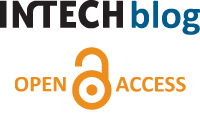As we’ve had a story this week about open education and one on Stellenbosch University, it seems like a good time to mention a new supporter to the Open Courseware Consortium: the African Virtual University (AVU). The AVU on 31 October pledged $25,000 in support over the next five years, thus becoming the 14th Sustaining Member of the Consortium, which has more than 200 members around the world.
The university was launched in 1997 in Washington as a World Bank project. It has its headquarters in Nairobi, Kenya and in 2003 gained the status of a Pan African Intergovernmental Organization thanks to the signing of a charter by the governments of Kenya, Senegal, Mauritania, Mali and Cȏte d’Ivoire. Its mission is to increase access to quality higher education and training through the innovative use of information communication technologies.
How do they do this?
The University is developing a corpus of open courseware materials designed to address Africa’s most pressing educational requirements. The courses may be delivered through a network of learning centres, students will be able to study from home or anywhere they have internet access – or they can choose a blend of online and face-to-face study.
The programmes delivered at learning centres entail payment of a fee by the participants, with the aim of achieving as much financial independence for the centres as possible. The fees may be covered by grants or donations where required. Through this, and through realizing economies of scale, the project should reduce reliance on individual donors. Other than that, as the open courseware title implies, access to most of the materials will be free.
At present, educators are being trained in delivery of the programmes and the network of centres is being extended. Courses and programmes are being offered in subjects such as natural sciences and mathematics, IT, teaching skills, renewable energy and food security. Webinars are held online. Ongoing efforts are aimed at increasing the number of people who have access to education throughout Africa.
In order to do this, it is necessary to take into account the linguistic diversity of the continent. The AVU is able to offer services to students in Anglophone, Francophone and Lusophone Africa. A component of the project also aims at facilitating the equal participation of women in education.
The AVU’s website informs us that since the institution was launched in 1997, more than 40,000 students have been trained, the e-Learning network now includes more than 53 Partner Institutions in 27 countries. 133 academics have been trained so far in designing and delivering their own Open Distance and e-Learning programmes.
One obvious barrier to e-learning in Africa is the problem of access to the internet. Telephony networks are limited in reach and in capacity; many access the internet via satellite links and are faced with costs many times higher than for internet services in other parts of the world. According to Nwagwu and Ahmed in their report “Building Open Access in Africa” (Int. J. Technology Management, Vol. 45, Nos. 1/2, 2009), universities are still using dial-up connections that are so expensive that access is often reserved for senior members of staff.
In June 2009, the first undersea fibre-optic cable was laid bringing broadband services to East Africa, followed by the EASSy cable in August 2010, which should ease the situation in that part of Africa in terms of quality of service and price. For the rest of Sub-Saharan Africa in particular, the advent of plentiful and affordable bandwidth may still be a way off. Although technologies such as WiMax which don’t rely on cable distribution may be quick solutions to implement, the pervasiveness of mobile phone networks suggests that a more likely scenario is internet over GSM.
It is even possible that herein lies a solution to another problem: hardware. Bearing in mind their relatively low cost, many are convinced that for impoverished millions across the world, mobile telephones will increasingly become a lifeline, providing a source of information and a connection with the outside world. Here again, AVU is at the forefront, with mLearning initiatives in the pipeline.
This comment from a student in response to the BBC News story “East Africa gets high-speed web” sums up rather nicely why all of this is so important:
I work in a college which offers some of the country’s best diplomas (and we’ve just introduced a few degree courses, recently). However, poor internet connections have significantly hindered our activities and objectives of delivering “first class” education. It has not been easy to access online materials such as journals and books. Likewise, our students and colleges, at large, have always been failing to purchase books and other learning materials from various websites. I genuinely hope that this new technology will have positive impact on the development of African continent.
Juma, Dar es Salaam, Tanzania










